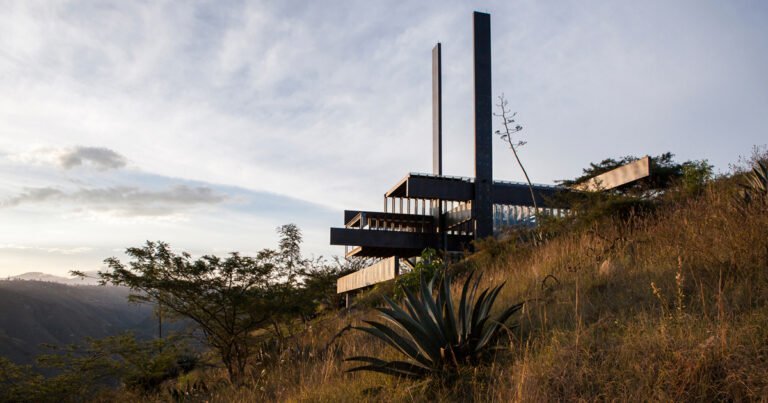focketyn del rio studio transforms 19th century military barracks into kHaus cultural center
a model for circular architecture and re-use
Swiss architecture practice Focketyn Del Rio Studio presents its renovation of an historic building in Basel into the new ‘kHaus’ cultural center. Once housing a military barracks when it was first built 150 years ago, the seminal building now stands as a public nexus in the heart of the city.
Studio founders Miquel del Rio and Hans Focketyn won the international competition to reimagine the building in 2013, a project which has taken eight-years of design and construction. Taking shape as a ‘cultural beacon,’ the transformed architecture is now ‘open to the public, the city, and the future.’ See designboom’s previous coverage of the project’s construction process here.
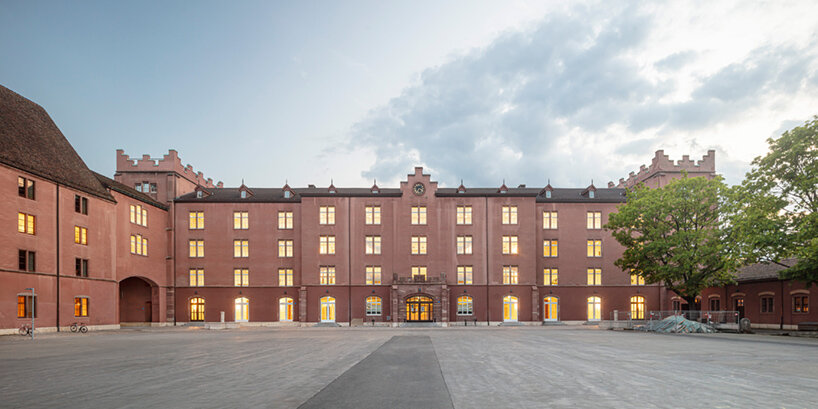
images by Adrià Goula
the history of khaus and the kaserne area
What now stands at Focketyn Del Rio Studio’s kHaus cultural center (see here) was once a military barracks complex in the middle of Basel. The structure was built 150 years ago, and formed a sequestered area, hidden away from public access. The place had stood abandoned abandoned since 1966.
Since then, the imposing architecture had become organically embedded into Basel’s urban fabric as a social hub known as the ‘Kaserne area’ — ‘Kaserne’ being the German word for ‘barracks.’ The area had become a popular gathering spot, a space for cultural and religious expression, a music and event venue, and home to several restaurants and bars, all adjacent to a large public park.
Throughout all this organic development, the complex’s main building remained abandoned. Due to its central location in Basel, and adjacency to the river Rhein, the city launched an international competition — won by the architects at Focketyn Del Rio Studio — to transform this central structure now known as kHaus.
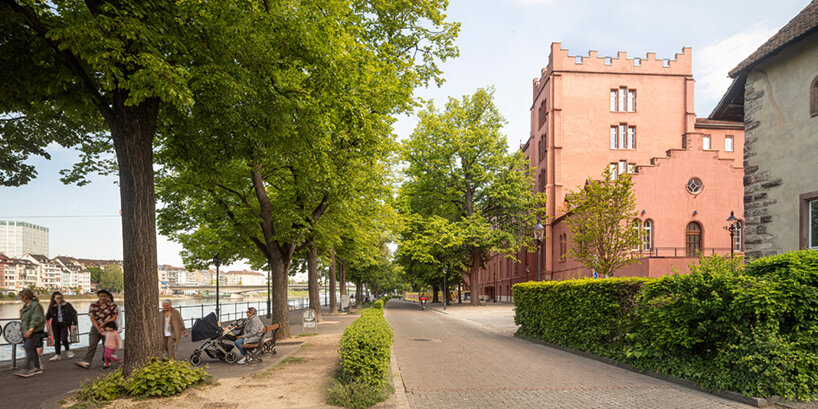
the new exterior by focketyn del rio studio
With its newly completed kHaus cultural center, Focketyn Del Rio Studio (FDRS) introduces a contemporary public space within an historic location. The renovation unites, for the first time, the river Rhein and the Kaserne courtyard. At the courtyard’s south end, a new opening is carved out, taking shape as a classical arch with a concrete frame. With new corridors providing permanent public access to the river throughout the year, visitors can travel throughout the building at any time of day.
FDRS retains the building’s original composition and spatial logic, turning its kHaus into an open and porous social center for many activities at the riverfront. Referencing the building and the site’s history, the architects subtly reconfigured its exterior while keeping its character intact. Its facade was gently altered by enlarging all of the ground floor windows into doors, converting the building into an open and accessible structure, filled with life and the echoes of many different languages.
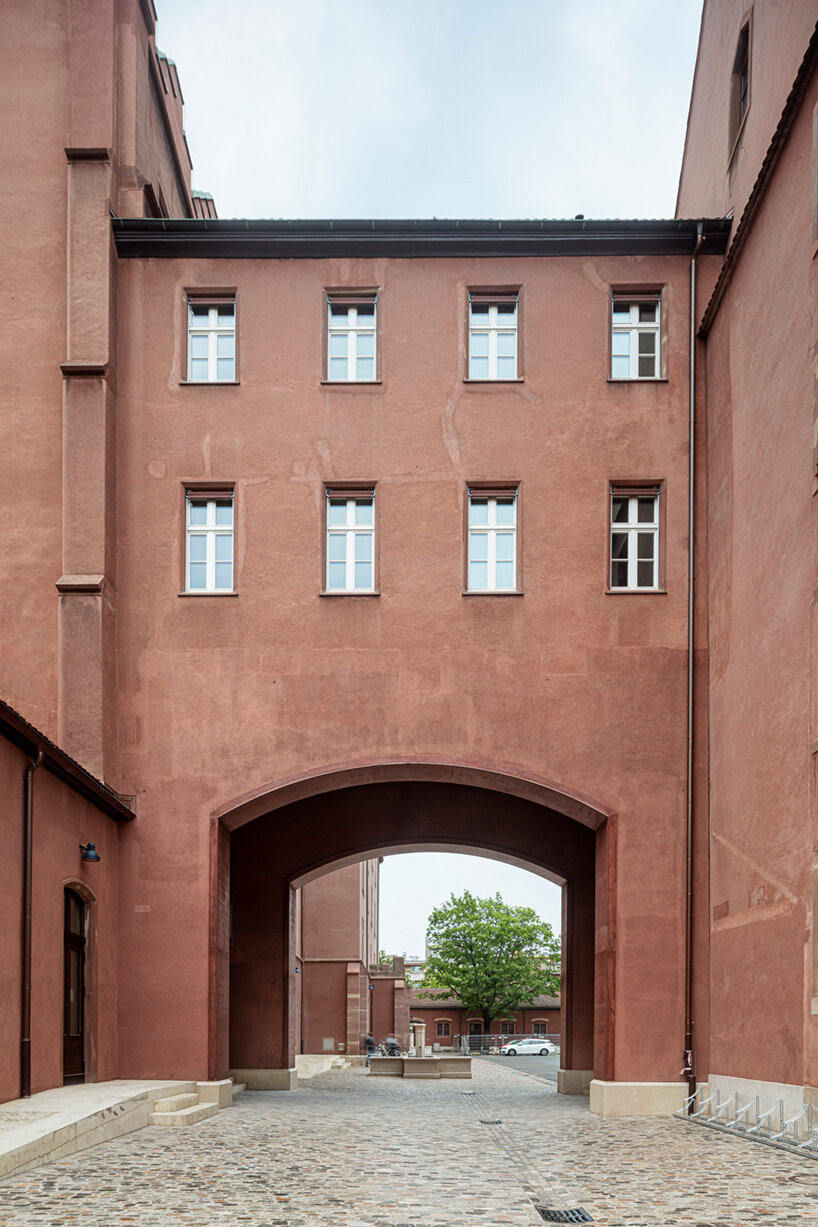
Hans Focketyn and Miquel del Rio comment: ‘Our intervention at the Kaserne’s main building fulfills the site’s potential by opening it up to the river; the building itself invited us to do what we’re doing.
‘We’re not trying to attract attention. We’re convinced: now that the transformation is complete, it will be hard to imagine the Kaserne in any other configuration. Our work is done: We prepared it for its next life.’

the new interior
At the building’s core is the Plaza — an extensive, indoor public space which is located between the two facades, the river, and the courtyard. Rising over thirteen meters (43 feet), it hosts activities year-round. The plaza is conceived as the primary public access to the building and is intended for everyone as a place to go on wet winter days or hot summer afternoons. A sculptural stairway connects the courtyard down to the river.
The interior of the kHaus is defined by plurality and versatility. In its center is the public Plaza, and directly above is an events and performance space. Spread throughout the upper five floors are art and rehearsal studios, a matrix of multifunctional rooms, restaurants, dining areas, and spaces for worship, all linked by the central Plaza and three vertical stairways.
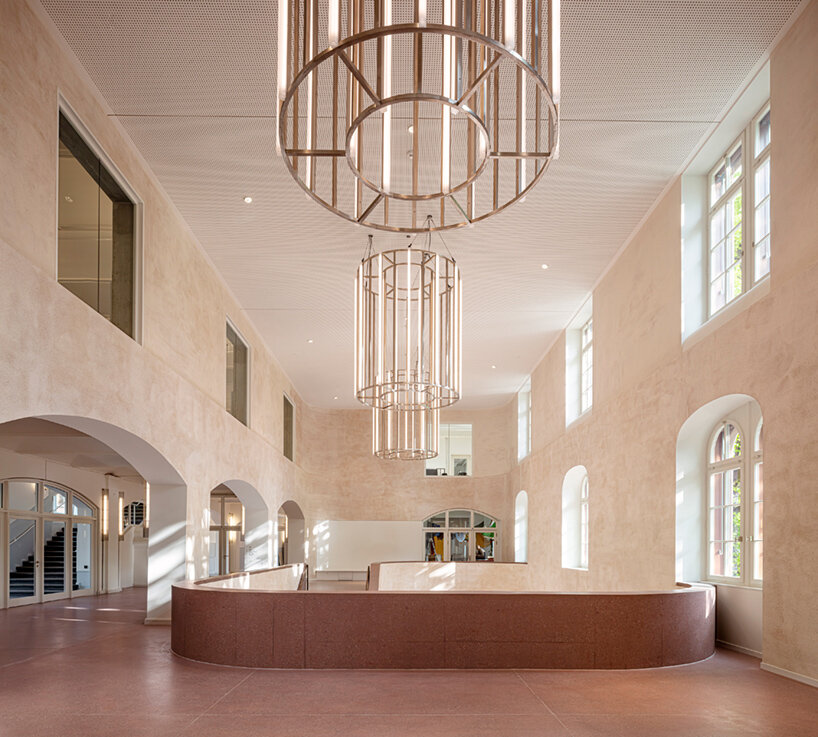
designed with the spirit of sustainability
The strategy of preservation and retrofitting was meticulously carried out by the engineers at Schnetzer Puskas Ingenieure. Apart from the opening in the intermediate wing, the completed project preserves the building structure with its massive quarry stone walls. Major interventions were only made in the middle of the five building sections and in the river-side zone neighboring the north and south towers, where two additional access cores were installed.
By preserving the building structure as much as possible and minimizing the additional material consumption, a high structural efficiency is maintained. The project stands as the successful conversion of an historic structure to a sustainable building.



